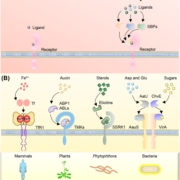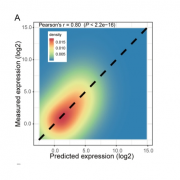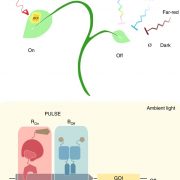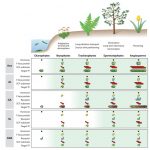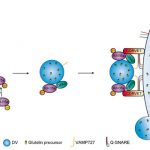Review: In vitro analytical approaches to study plant ligand-receptor interactions (Plant Physiol)
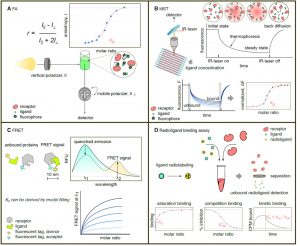 It seems every other paper shows a nice diagram of a signaling cascade that includes a receptor interacting with its ligand. However, sometimes these diagrams are little more than speculation or guesswork. It’s not always easy to figure out if this interaction is real. Here, Sandoval and Santiago review (and nicely illustrate) the approaches that can be used to identify ligand-receptor interactions in vitro, including best practices, limitations and caveats. The methods described include label-free assays such as: Isothermal titration calorimetry, Optical biosensing technologies, Fluorescence anisotropy (and more); labeled-ligand assays such as Microscale Thermophoresis (MST), Förster (Fluorescence) Resonance Energy Transfer (FRET), Radioligand binding assays, and Chemiluminescence-based receptor-ligand assay; and structure-based ligand binding assays such as Nuclear Magnetic Resonance (NMR), Hydrogen Deuterium exchange Mass Spectrometry (HDX-MS), Wide-Angle X-ray Scattering (WAXS) and Small-Angle X-ray Scattering (SAXS). This is a great resource for those wishing to validate interactions as well as those who need a quick guide to help them interpret others’ work. (Summary by Mary Williams) Plant Physiol. 10.1104/pp.19.01396
It seems every other paper shows a nice diagram of a signaling cascade that includes a receptor interacting with its ligand. However, sometimes these diagrams are little more than speculation or guesswork. It’s not always easy to figure out if this interaction is real. Here, Sandoval and Santiago review (and nicely illustrate) the approaches that can be used to identify ligand-receptor interactions in vitro, including best practices, limitations and caveats. The methods described include label-free assays such as: Isothermal titration calorimetry, Optical biosensing technologies, Fluorescence anisotropy (and more); labeled-ligand assays such as Microscale Thermophoresis (MST), Förster (Fluorescence) Resonance Energy Transfer (FRET), Radioligand binding assays, and Chemiluminescence-based receptor-ligand assay; and structure-based ligand binding assays such as Nuclear Magnetic Resonance (NMR), Hydrogen Deuterium exchange Mass Spectrometry (HDX-MS), Wide-Angle X-ray Scattering (WAXS) and Small-Angle X-ray Scattering (SAXS). This is a great resource for those wishing to validate interactions as well as those who need a quick guide to help them interpret others’ work. (Summary by Mary Williams) Plant Physiol. 10.1104/pp.19.01396


